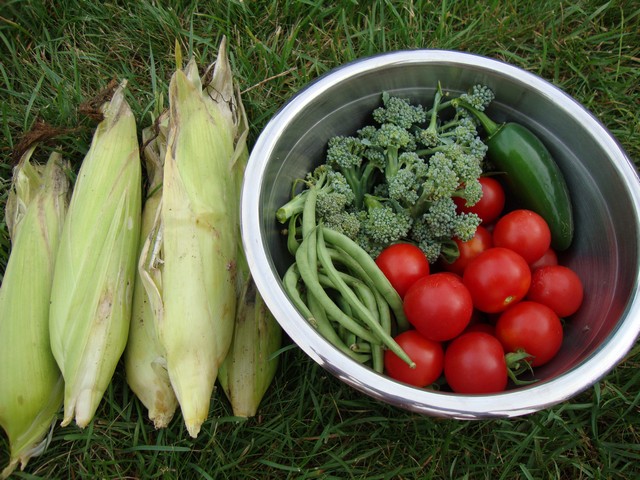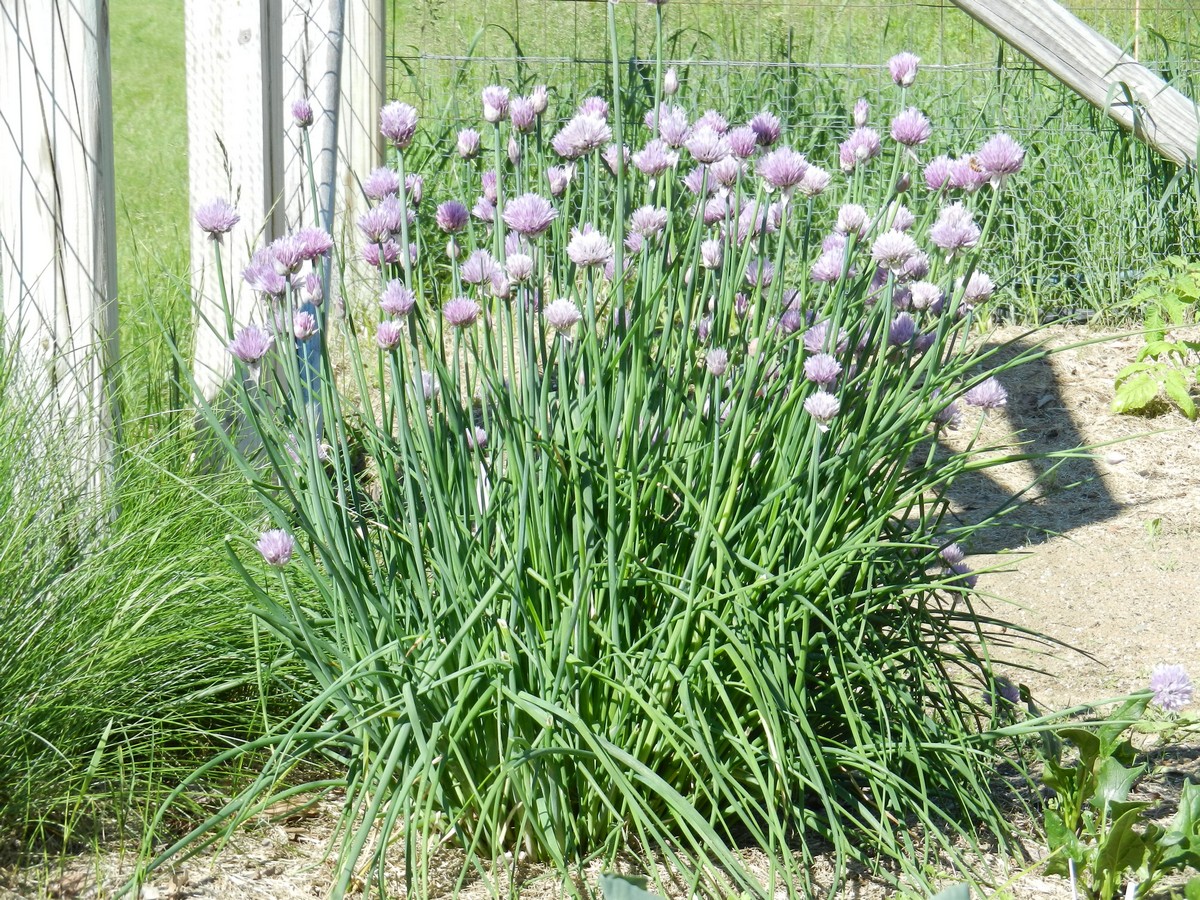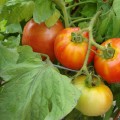
When I started my new vegetable garden, spring of 2010, I had a lot to learn. How should I plant, what should I plant, and how to grow these different plants? It was overwhelming at first, until I figured out how to go about it. I planted a myriad of different plants to try to get an idea of which vegetables I would enjoy growing. In my post How to Plan a New Vegetable Garden, What to Plant; Part 1 I wrote about how I experienced growing a variety of different vegetables, such as tomatoes, corn, potatoes, cabbage, broccoli, cauliflower, green beans and carrots. And in the following link you’ll find my post on how my husband build our awesome fence to keep animals out.
In this post, Part 2, I will continue down the list, and cover what my initial thoughts were regarding bell pepper, jalapeño pepper, chives, parsley, dill, basil, leeks, scallions (green onions), romaine lettuce, spinach, strawberries, sun flowers, and I will link to previous posts about my experience with garlic. In the weeks and months to come, I will post more detailed information about many of these various vegetable plants.
Though I’m not a big pepper person, I decided to try some just for the fun of it. I found that bell peppers and jalapeño peppers were easy and fun to grow, but I also found that purchased plants produced far better than my plants from seed. And the larger the pot, the better they performed. Being that peppers are very slow growers, my plants from seed never made it to the size I could get at the store. So if I do these again, it will from now on always be from plants I purchase in pots.

Jalapeno peppers
Bell peppers: Interestingly enough, my plants could support only one pepper per plant when I purchased small, potted plants. Later, when I purchased larger pots, the production went way up. Just see the difference between the plants in the first and second picture below:

Green bell pepper
There’s a huge difference in production, and once the two on the plant below were picked, the plant produced more:

Chives have a mild onion flavor, and my parents always added them to scrambled eggs when I grew up. A bit into the summer they will grow beautiful, purple flowers, which are also edible. The flowers, just a few in a skinny, little vase, look pretty enough that I will grow them for that reason alone! Next year I’ll have to take a picture to show them off. Chives require practically no work, though weeds can take over if allowed to grow in the middle of the bunch. They will come up every year, so I like to keep a corner sectioned off for chives so that we can till without digging them up.
Chives look a little bit like grass, only the blades are hollow, skinny tubes. Here’s a new plant, and underneath, mature plants in full bloom:

New chives plant

Parsley, dill, and basil was easy enough, though it took a while for these little seeds to germinate and sprout. So at first, I thought these crops had failed. But I needed a healthy dose of patience, and they did end up sprouting in the end after all. The plants kept growing larger even as I continued harvesting. In the end I had more than I needed. I did find that dill is extremely potent when fresh, and ended up ruining a salad before realizing that, by adding way too much! In addition to being potent, dill is very, very happy to make flowers, which means seed production. So I had to be out there every couple of days to pinch off flowers to avoid the seeds from maturing and spreading into my entire garden. That would have resulted in a jungle of dill! Yikes! I probably won’t be doing dill again, or maybe just stick to one or two plants and put that little bit in the freezer for whenever I need it. Basil, I actually didn’t plant in-ground, but kept in a pot on my deck. That is recommended with many herbs, and they can be very spread-happy and take over your garden in no-time. I thought my basil looked very nice, and doing really well. That’s until I saw the ones my neighbor had in her yard! I didn’t feel so proud of mine after that… Her basil plants were also in pots, but they were very tall and full compared to my puny plants. So, next time I do basil, I will purchase plants in pots, or start very early, inside. Being that I just ordered seeds, I suppose it will be the latter one this year; I will try to get them planted inside in early March. Then we’ll see whether mine can compare to hers when all is said and done! I have my doubts, as everything she touches seems to turn to gold. Being that she has a heart of gold as well, that makes a lot of sense to me!
When it comes to leeks and scallions (green onions), I found that the scallions I seeded did well, while the leeks did extremely poorly. I really don’t know why, I just know that I only ended up with one or two leeks, and they were very puny. So, needless to say, I’ll be happy to do scallions again, but I’ll skip the leeks.
Lettuces were for the most part easy and enjoyable. Both romaine and spinach grew very well, but not until they escaped my warm house. I initially planted them from seed inside, and when they didn’t do very well, I placed them in a warmer spot, only to find out that they are cold weather crops which prefer COLD. So I was advised to place them outside. I ended up reseeding directly in-ground, which went much better. At the same time, I also purchased a few potted plants of each, and these took off right away. Within a couple of weeks we could start harvesting.

Romaine lettuce
I really enjoyed the spinach, and we would harvest some every day to eat raw with our dinners. The romaine lettuce, on the other hand, tasted a little bitter to me from the very beginning, and wasn’t as sweet as the variety I’m used to from the grocery. But it may have been that specific type, I don’t know. And of course, being that lettuces are cold-weather crops, they bolted (went to seed) as soon as we hit July. One of the problems with bolting is the extreme bitterness that follows. The season is pretty much over at this point, though they can be reseeded later for a fall crop. I will definitely be growing spinach again, and maybe romaine as well if I can find a better variety.
Here’s some spinach that I managed to harvest before the rest got bitter. You can see them starting to grow flower stalks in the center: (Oh, and there is a tiny basil plant in the pot to the right!)

Spinach
I also had my kids grow a sunflower each, and planted them outside by the corn stalks, thinking they would be a perfect match size wise. I was wrong! I had to rip them out again pretty early on, as they grew so fast and produced huge leaves, shading the corn and causing a problem. We tried again in a different area, away from vegetable plants, and this time they grew nice and tall without causing any problems, and produced seeds and all. Having an issue with determining whether the seeds were ready, however, and giving them another week just in case, we found that most of the seeds were already gone when we went out to harvest; taken by birds, perhaps? Many of the seeds could be found on the ground as well. So a different time I’ll have to be more on top of things if we want to harvest seeds. But pretty flowers, that they are!! It is amazing to see them turn their heads to always face the sun!
Garlic, which I added the second year, is a chapter in and of itself. Look here, and here for more details on that.The first time around, I made every mistake possible, and reaped the result of that. So this year I’m in the process of trying again, this time after educating myself about it. I take it as an adventure, and hope that this year of 2012 might look different and produce a lot of pretty, good quality, garlic bulbs. We shall find out soon enough, I suppose.
Strawberries are always a sweet reward, and the chipmunks around us agree. They seem to know fully well which ones are the biggest, prettiest, and juiciest berries, and they take a bite out of each one. Obviously, the next one over might be sweeter, so why fill up on the first berry?? Sometimes they do finish the whole thing, and if they always did that, I might have blessed them (on a good day.) They are, after all, very cute animals. Just look at this pretty one, who ate most of the flowers and leaf buds off of my weeping cherry tree (yes, they can climb! I know that now!)

I’m going to have to do some research on how these critters can be kept out, because most of the time I prefer to harvest more than 50% of the berries. I did ask on one message board, where someone suggested something called Cat Scram. This seems to be an indoor-only device, which sends out high pitch sounds that deter cats and little critters. Perhaps there is a device similar to it for the outdoor? I’ll have to check into it. I am otherwise not sure how I feel about growing strawberries yet; I’m still learning and figuring things out. Though we’ve been harvesting a bit of berries, I don’t feel I have been overly successful yet. But I’m hoping for good results this coming summer as the plants have been allowed to form good roots and new plants by runners. They are ever bearing plants. I planted some in the fall of 2010, then some more in the spring and summer of 2011. This past spring, a lot of flowers from the first batch of plants were lost to frost, as I didn’t realize they needed protection from frost. The plants themselves are very hardy and will overwinter, so it didn’t connect with me that the flowers might not tolerate as much . As it turns out, the flowers are very sensitive to frost! Who knew!? Well, now I do, so I will take better care to shield them during frosty nights.
All in all, having a vegetable garden is a lot of fun and very rewarding! There is some trial and error involved, and though you don’t need to know every detail about every plant, doing some homework and having an idea of which vegetable plants to choose and how to plant and grow them, makes a big difference in the outcome. I hope you’ll love it as much as I do!


I hope to read all of this later and keep in touch. Love the chipmunk. Just because you are from Norway, I needed to share my mother was from Stavengar and came to the states as a 9 year old with family… dad found her in Holstad, MN at 21. You know the rest of the story..
About Strawberries:
I learned pinching the blossoms in the first year will help grow bigger plants for the following season. I also covered them with straw during the winter but that was in Medford Or and that was with milder winters. Midwest plants are hardy and do survive…go figure.
Also apparently the plants yield berries for three year before you need to remove the old and make room for the new (younger plants) Dad would do a drastic (cultivate) to make rows and eliminate some of the runners.
We always had June berries but not huge ones like you find in the stores or here in the West. So good luck with all you…check out my Strawberries and Yellow Jacket story at grandmuffin.
Thanks for sharing what you are doing. Your peppers look awesome!
Thank you for such a fun, nice comment! Stavanger is actually my home town in Norway! WooHoo! And thank you for your thoughts on strawberries; I did do a lot of pinching of the flowers in the beginning, and the way I’m planning to deal w/older plants is to till the old rows and pick from the runners, then let the runners spread and then till those rows once the new babies are filling in. So kind of rotate which areas I till and let them multiply in between. We shall see if it works eventually, but that’s my plan. I also need to get large sheets from GoodWill to cover the blossoms from the frost. Mine are everbearing. I love your blog, that was me commenting (yesterday?)! Thanks for sharing what you do, and please do stay in touch! 🙂